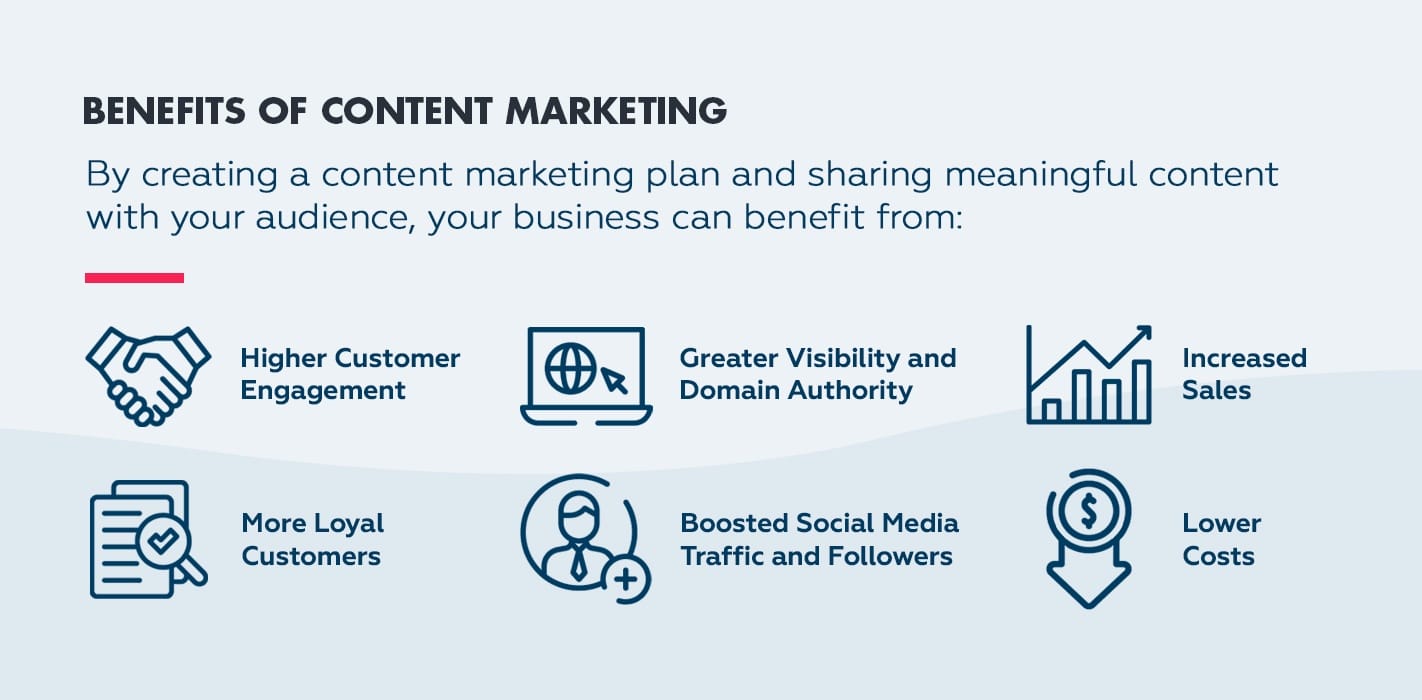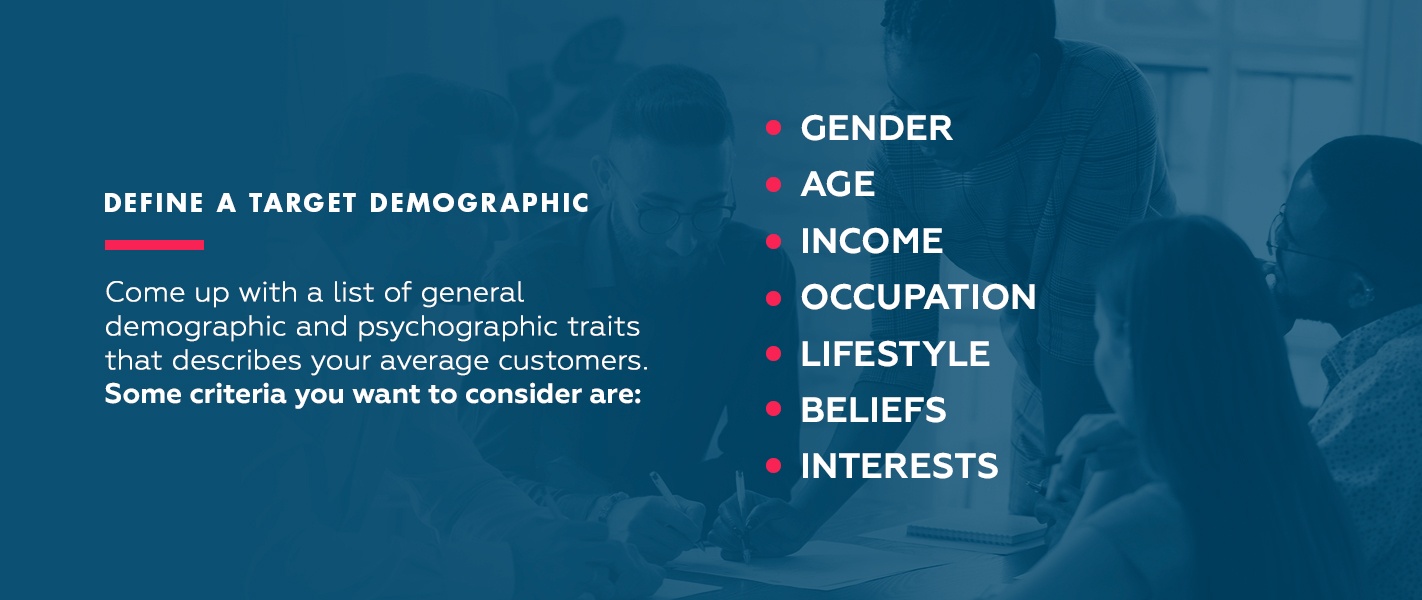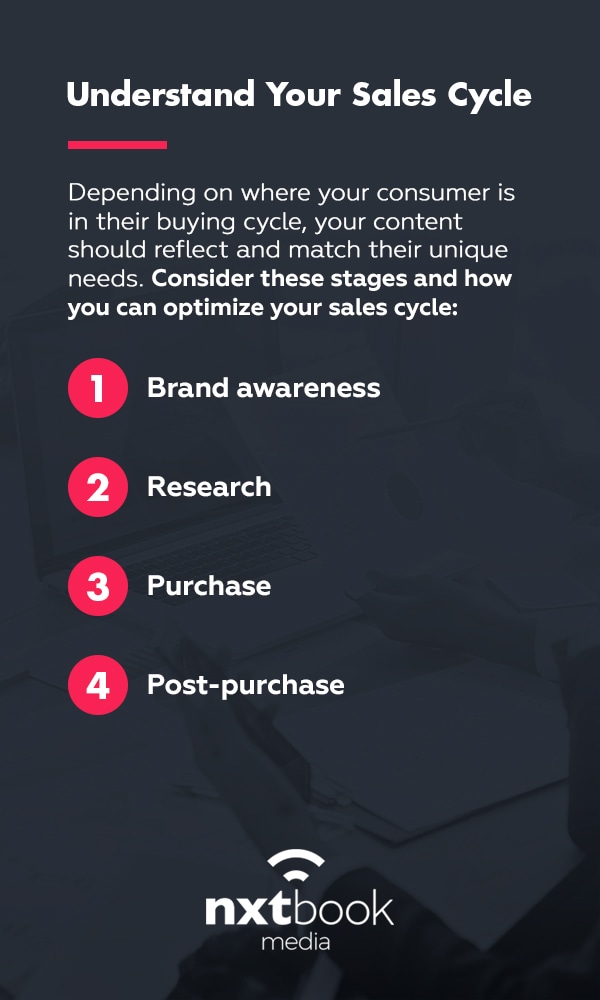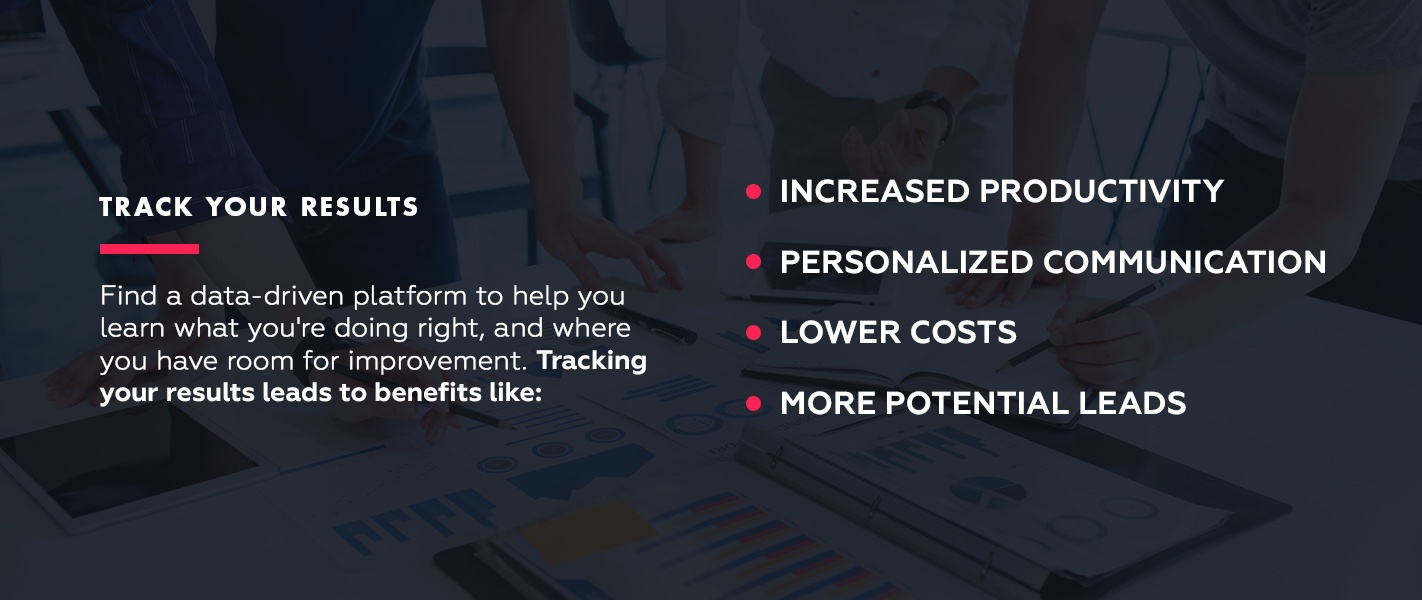How To Develop an Effective Content Marketing Plan

Written by Matt Berringer
August 27, 2020
As a business owner, you’re continually looking for new ways to attract customers and increase revenue. People turn to online platforms to answer everyday problems — and not so everyday problems — from ways to cure their boredom to how to replace a broken window.
This constant flow of online traffic opens the door for great marketing opportunities. Take advantage of this traffic by developing a content marketing plan, a cost-effective way to achieve your company’s unique goals.

What Is Content Marketing?
Content marketing is a forward-thinking marketing strategy where businesses of any kind create and distribute meaningful content to generate customer traffic, and in return, revenue.
Imagine you’re a consumer searching for tips and tricks for gardening. When you click on a link from the search engine results page (SERP), you’re brought to a content page full of easy-to-read tips like when to plant your garden, tools to use, and the best fruits and vegetables for beginners.
Somewhere on the page, there is likely a section promoting a company’s product, like a pair of gardening gloves, to make gardening easier for you, their prospective customer, to do.
You didn’t start your search looking for a new pair of gardening gloves. But, after having your questions answered and process outlined, maybe a new pair of gardening gloves is just what you need to get the job done.
This is an example of content marketing. You put out content, then let that content do the marketing for you.
Why Use Content Marketing?
Your audience has questions, and when they’re looking for answers, you want them to rely on your content. Content marketing is important because it:
- Earns your customer’s trust
- Generates leads
- Create a satisfactory customer experience
- Reinforces brand image
Consumers know when a business is marketing to them. Think of traditional marketing, like tv ads, billboards, and mailers. They’re placed directly in front of a consumer, where they most likely glance at the promotion for a second or two before continuing their day and finding the information they actually want to know.
Content marketing is more effective because consumers go to you for an answer, instead of the other way around. Therefore, the product or service you promote appears more valuable.

What Are the Benefits of Content Marketing?
Businesses across every industry are turning towards content marketing for its many benefits. By creating a content marketing plan and sharing meaningful content with your audience, your business can benefit from:
1. Higher Customer Engagement
More content leads to more customer engagement. Your content is a way for consumers to look into your business and identify with your brand without fully committing to a product or service.
You’re building relationships with customers through your content. Once they make an emotional connection with your brand, they’re more likely to come back to you in the future and trust what you have to say and offer.
2. More Loyal Customers
If a customer connects with your brand and enjoys the benefits, they’re more likely to trust your advice and recommendations above your competitors and stay loyal to your brand.
Use your loyal customers as a learning opportunity. Learn what questions they have, what qualities they see in your business that they don’t see in your competitors and how you can tailor your content to be more valuable to them.
3. Greater Visibility and Domain Authority
Creating and posting content puts your business in front of prospective customers across many platforms. Going back to our earlier example, when you click a link for the SERP, you’re likely not scrolling to the second or third page. Instead, you’ll click on the first link or two.
Posting search engine optimization (SEO) friendly content boosts your chances of getting those top spots and increases your visibility. Plus, once people find your content, they might feel inclined to share it on their own platforms. Or, other businesses may include a link to your content within their own, which leads to referral traffic.
For search engines to want to recommend your content, you’ll want to post with an SEO competitive edge. Being competitive means your content is user-friendly, easily readable, and answers other related questions. You’ll also want to optimize keyword usage and have a deeper understanding of your audience.
4. Boosted Social Media Traffic and Followers
The opportunity for readers to like and share your content on their online accounts may lead to increased social media traffic and followers for your business. If this is one of your goals, consider using a call to action (CTA) to promote your other platforms and sharing.
You can also do the reverse. If you’re trying to encourage your social media followers to read your blog posts, advertise your blog on those platforms. Post snippets or summarized versions and internally link to your own content, another SEO strategy.
5. Increased Sales
Your content’s CTA is your way of making sales. In our example, the CTA was to buy a pair of gardening gloves. But, the hypothetical business didn’t lead with their sales pitch. Instead, they related their engaging and valuable content to their product, helping you see the value of their product.
By posting content, you can turn a search or social media share into revenue. You may not see higher revenue right away, but by consistently posting, tracking progress and making adjustments, you’ll likely see a steady increase over time.
6. Lower Costs
Instead of spending money on social media advertisements or other paid forms of marketing, you’re generating revenue by posting “free” content. Free is an inexact term, as you’ll most likely invest in performance tracking tools or other professional services, but you’re also likely to receive a positive return on investment (ROI).
5 Steps to Content Marketing Plan
Creating a content marketing plan can be broken down into five steps:
- Set your goals
- Know your audience
- Keep an eye on your competitors
- Understand your sales cycle
- Select the best platforms to post your content
Each step is important and forms a solid foundation for the next.

1. Know Your Goals and Set KPIs
Start by developing content marketing objectives. What do you want to achieve? How will using content marketing help you get there? With your team, brainstorm long-term and short-term goals to guide your marketing plan.
Write a Mission Statement
You likely have a company-wide mission and vision statement. A content marketing mission statement is similar but keeps your content strategy laser-focused on your goals. Your mission statement should be short and decisive, outlining:
Who your content is targeting.What types of content you’ll publish to reach them.When and how often you’ll post.Where you will post to maximize visibility.How you and your audience will benefit.
While your goals may not change, your methods of achieving them might. Marketing strategies and tools change every day, so consistently revisit this mission statement to track your progress and see where you can improve.
Create Milestones
Make sure your goals are specific, measurable and achievable. Measurements are often referred to as key performance indicators (KPIs), and every company’s will look different according to their goals, but some content marketing factors to track include the following:
- Unique page visits
- Bounce rate
- Downloads
- Time engaged
- Shares
- Inbound links
- Comments
For example, one of the KPIs for a content manager may be a specific number of downloads per month. Your milestones are unique to your business, so set goals that you know you can accomplish.

2. Audience Profiling
Once you set your goals, understand who you’re writing to. Write content that you enjoy talking about and other people want to hear. Avoid talking into the void. Instead, write to your target demographic and buyer persona.
Define a Target Demographic
How would you describe your average customers? Come up with a list of general demographic and psychographic traits that describes this group. Some criteria you want to consider are:
Gender Age Income Occupation Lifestyle Beliefs Interests
You likely already have an idea of what your average customer is like, but look at statistical data and trends that support your description. Do your own research and survey your customers to learn more about their consumer behavior.
Focus on a Buyer Persona
Using your identified target demographic, narrow it down even further to develop a buyer persona. A buyer persona is a semi-fictional customer who shares commonalities with almost all of your average customers. Instead of trying to relate to every reader, keep this painted picture in mind and ask yourself what they would want to know and how they would best understand what you’re trying to relate.
For example, think of a grocery store’s customer base. Everyone needs to eat, but writing content to solve everyone’s needs is next to impossible. Instead, maybe the grocery store can write about the top five tips to save money while grocery shopping. It doesn’t exclude any of their customers but answers a common question they might have.
Or, they might write separate blog posts to expand their customer base. Maybe they’ll write a blog post about fresh produce for health-conscious or vegan customers, and the next about easy family meals for parents on the go.
In summary, know your audience and write with an educated intention to maximize your content’s value.

3. Research Your Competitive Positioning
Your customers are looking to your competitors for information, too. For this reason, it’s important to research your competitors and form a unique voice your customers will be loyal to.
Drawing a Competitor Map
Competitor mapping is a simple yet extremely useful tool used to strategically position your business against competitors. It allows you to take an objective step back and learn from the industry as a whole. Develop a detailed competitor map following these steps:
- List four to six competitors to analyze: Some business owners claim they don’t have any competitors because they feel their competitive advantage cannot be matched. If that’s the case, list companies you find yourself watching and trying to replicate in some fashion.
- Analyze each competitor’s strengths and weaknesses: Using a document per competitor, create two columns and make bulleted or numbered lists of what the competitor does well, and where they can improve. Make one for your own company, too, for easier comparison later.
- Look over your list for any commonalities: Do any companies have a shared strength to yours? If yes, highlight this area, as it may indicate the strength needs further improvement or that it isn’t really a strength at all. Do the same for any weaknesses. Take advantage of that weakness before your competitors do, turning it into a strength and differentiating yourself to stay one step ahead.
- Look over your list for any dissimilarities: Then, look for areas where you excel, and other gaps where your competitors have the advantage. Highlight these gaps as they’re crucial in guiding your content strategy objectives.
- Review your highlighted areas and list five to 10 things you could change: You may find that you have more or less than five to 10 things highlighted. Either narrow down your list to include the most influential factors or broaden your list by finding ways to mimic others’ strengths or improve your weaknesses.
A tip — don’t view any business as too big or too small to be a competitor. Create your list without any limits. If something seems far-fetched right now, make that your long-term goal and use other factors as short-term goals to get there.
Perform a Content Gap Analysis
A content gap analysis is similar in structure to competitor mapping, but you’re specifically looking for ways to fill content gaps from your current content and your competitors’. A content gap is as it sounds — any opportunities to create and publish content to achieve your desired results.
For example, maybe from your research when drawing a competitor map, you noticed a competitor excels in social media engagement and followers. During your content gap analysis, you read their blog post or ebooks and you find CTAs directing the reader to their social media platforms. Here, you found a content gap.
Or, maybe you found a competitor’s whitepaper similar to yours, describing the same topic, of the same word count and comparable outline. Despite these similarities, their whitepaper performs better on SERPs. You’ve found another content gap, most likely indicating you have some room for improving your SEO competitive edge, such as adding keywords or internal links.

4. Understand Your Sales Cycle
Think of the last big purchase you made, like a car. As a consumer, you went through a buying cycle. You recognized a need for a new vehicle, researched and maybe test drove one or two vehicles, bought the one that aligned your wants and capabilities, then closely evaluated its performance post-purchase.
A sales cycle takes this concept and uses it to strategize sales efforts to maximize the possibility of a consumer buying the product or service.
Depending on where your consumer is in their buying cycle, your content should reflect and match their unique needs. Consider these stages and how you can optimize your sales cycle:
- Brand awareness: When your customer recognizes a need for a product or service, your goal in this stage is to be the first business they think of. Post versatile and user-specific content that outlines a problem they might have, and finish with a strong, memorable CTA.
- Research: In our hypothetic example, you didn’t test drive only one car. Even if that first car was the one you ended up purchasing, you test drove others to be sure of your purchase. Your customers will do the same, so describe what makes you unique from your competitors.
- Purchase: Congratulations, your consumer chose your product or service to solve their need. The hard part of their buying cycle is done, and now it’s your job to create a sense of urgency and clearly outline the steps, or pave the path, to actually making that purchase.
- Post-purchase: The cycle doesn’t end once you make the sale. Now, your customer is forming opinions on the product or service, and you should continue a line of communication to see ways they’re enjoying or potentially dissatisfied with their purchase. Use this information to learn and strengthen the next sales cycle.
You’ll likely find that a majority of your customers go through a relatively predictable buying cycle. The most important part of understanding your sales cycle is listening to your customers and letting them guide your content, influencing them when appropriate.

5. Select the Best Channels and Platforms
You could have a near-perfect piece, but the real determinant of its success is the content marketing channels and platforms you post it to. Before diving into how to select the best content marketing channels and platforms, let’s discuss the difference between the two:
- Channels: A channel speaks to an audience, steadily adding content for them to see.
- Platforms: Platforms serve a community where members can add their own content as they see fit.
Both are dependent on two things — traffic and engagement. If you post quality content with no one to see it, you might as well not have posted anything at all. Or, if you share content with an audience or community who has no need for your offerings, your chances of making a sale reduces greatly.
Avoid these risks by choosing the best channels and platforms to achieve the best results.
Choose a Responsive Digital Publishing Platform
To best explain how to choose a responsive digital publishing platform, let’s use another example. Assume you’re a content marketing manager for a newly published fashion magazine. Your goal is to increase exposure and user convenience to create loyal customers. You may ask yourself, is the platform:
- User friendly: Put yourself in the reader’s perspective. How will they engage with your magazine? Think of ways they will turn pages or zoom in on photographs. If the reader can’t easily interact with your content, the chances of them reading the next issue are lower.
- Cross-platform capable: Technology is changing every day, and the way your consumers engage with your content changes just as fast. Don’t limit the platform where your reader can engage with your issue. Instead, utilize multiple platforms and make your magazine mobile.
- Within your budget: For a newer company, you might not have the biggest budget, but it’s important to have at least some funds for marketing efforts. If done right, you’ll receive higher revenue for every dollar spent on content marketing, making finding the best digital publishing platform a worthwhile cost.
- Customizable: You worked hard to build your brand’s image. For a fashion magazine, your brand image extends farther than the clothing you feature or the tone you write in. It includes the font you use, the format of subheadings, selective color schemes and other fine details. Find a platform that values your brand and allows you to control your brand image.
Don’t limit yourself to just one channel or platform, but do be selective with where you publish your content. If your target audience is a female in her mid-20s who values self-expression through clothing, find a platform to reach that buyer persona best.

Bonus Tip: Track Your Results
How will you know if you reach your goal if you’re not tracking your results? Find a data-driven platform to help you learn what you’re doing right, and where you have room for improvement. Tracking your results leads to benefits like:
- Increased productivity
- Personalized communication
- Lower costs
- More potential leads
Create a content marketing planner to use these tracked results for future growth. Identify the data trends and optimize that growth, tailoring your content to what you know works. Still, don’t be afraid to step out of your comfort zone every once in a while to see how your audience responds.
4 Examples of Types of Content Marketing
Engage your audience across different platforms with different types of content, too. The most important factor to consider when making content is that it’s evergreen — timeless, valuable, high-quality and definitive. Some examples of content marketing include:
1. Blogs
Blog posts generate organic traffic and increase revenue over time. Posts, on average, are 1,000 to 2,000 words. But depending on your audience, they may respond to shorter or longer word counts.
When posting blog content, post content that relates to what you offer. Ask yourself, what problems do your products and services solve? Brainstorm a list and develop blog topics surrounding those ideas. The key to writing blog posts is to research what your audience is looking for, what your competitors are doing and what search engines are already suggesting.
2. Magazines
Magazines and blogs are similar, but magazines generally require more teamwork and structure. In an increasingly technological world, magazines are turning to digital publishing to reach their audience better.
Publishing magazines digitally allows you to receive the benefits of content marketing, as listed earlier, with the possibility of reaching a larger audience than printing and distributing through limited channels.
3. eBooks
Think of ebooks like longer, more in-depth blog posts. If a customer is looking for a detailed answer for their question, they may prefer an ebook over a shorter blog post. In fact, one of your blog posts can be a summarized version of your ebook, and your CTA can be downloading the full ebook.
When potential customers find your ebook, they’ll submit a lead form to gain access, opening the door for other marketing strategies to reach them in the future.
4. Whitepapers
One step further, whitepapers are similar to ebooks but are even longer and packed with information. Like ebooks, consumers turn to whitepapers for a detailed answer to their question, but whitepapers skew toward technical topics that require more data.
When posting content, you want the reader to be able to easily skim the material to find the information they’re looking for. With such a high word count, this can be easy to dismiss, but consider breaking up information using infographics, another form of content marketing.
Use the Best Digital Publishing Platform for Your Content Marketing Strategy
From the very beginning, Nxtbook Media believed in the unmatched power of content marketing. That’s why we developed our two digital publishing platforms — PageRaft and nxtbook4 — that allow you to create quality assets to engage your target audience and track performance, among other benefits.
We want to help you achieve your digital marketing strategy. To start receiving the benefits of quality content marketing, schedule a demo to learn how our digital publishing platforms can help you!